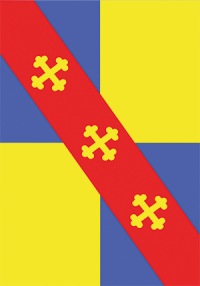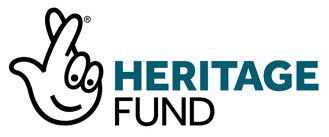Sir John Fastolf's Document
 Sir John Fastolf's armsThe Paston Letters (and associated documents) are a rich source of information on life in medieval times. This web site is bringing together those resources, from background information to viewing the letters as originally written. This page provides links to an on-screen image of a John Fastolf letter and some associated teaching resources. We're not giving a prescriptive position on how to use these materials - you will wish to vary their use depending upon the ages of your students, the facilities available - and whether you agree with our ideas!
Sir John Fastolf's armsThe Paston Letters (and associated documents) are a rich source of information on life in medieval times. This web site is bringing together those resources, from background information to viewing the letters as originally written. This page provides links to an on-screen image of a John Fastolf letter and some associated teaching resources. We're not giving a prescriptive position on how to use these materials - you will wish to vary their use depending upon the ages of your students, the facilities available - and whether you agree with our ideas!
Click on Sir John Fastolf Leaves his Goods for a page where the on-screen pages allow children to 'mouse-over' on the image and to see the words magnified, which will perhaps enable them to concentrate on particular letters and words. They can enjoy trying to puzzle out the writing of a clerk from several hundred years ago.
 Sir John Fastolf's document is simply a copy of the memorandum that can be printed out; it might be useful for students to write directly onto the sheet when they think they have puzzled out letters and words. There is plenty of opportunity for discussion once they have worked out their first ideas. We suggest you print it in landscape format in order to maximise the size for students.
Sir John Fastolf's document is simply a copy of the memorandum that can be printed out; it might be useful for students to write directly onto the sheet when they think they have puzzled out letters and words. There is plenty of opportunity for discussion once they have worked out their first ideas. We suggest you print it in landscape format in order to maximise the size for students.
 Sir John Fastolf 's document with annotations is a reference document prepared by the team at the Norfolk Record Office to help with understanding what Sir John has said. You may wish to use this with students, or you may wish to use this as a reference document for yourself.
Sir John Fastolf 's document with annotations is a reference document prepared by the team at the Norfolk Record Office to help with understanding what Sir John has said. You may wish to use this with students, or you may wish to use this as a reference document for yourself.
 A transliteration of Sir John Fastolf 's document is a transliteration of the medieval text into modern English text - you might even call it a translation.
A transliteration of Sir John Fastolf 's document is a transliteration of the medieval text into modern English text - you might even call it a translation.
There is of course much background to Fastolf himself and to the writing of this document - and the ongoing dispute to which it led. We give some links below:
On the Web the Wikipedia article on Fastolf will provide help, though note that at present it is using the wrong coat of arms for Sir John; that shown is his grandfather Hugh's arms with scallops on the bend whereas John's has cross crosslets.
The Luminarium Encyclopaedia article is another source of information.












